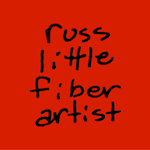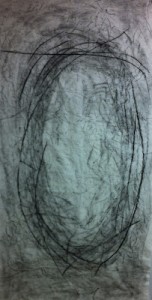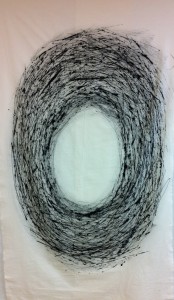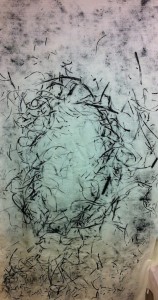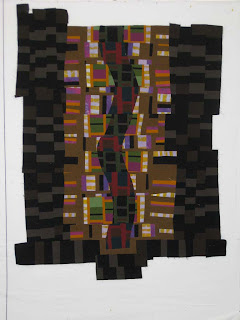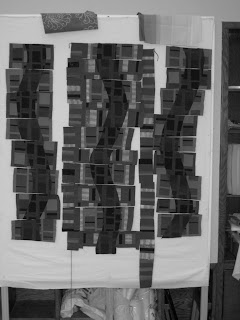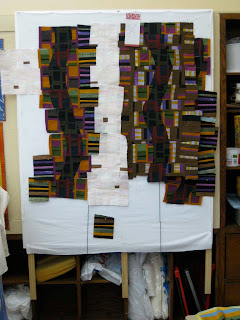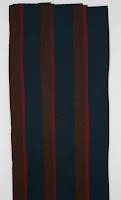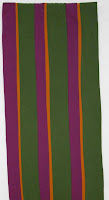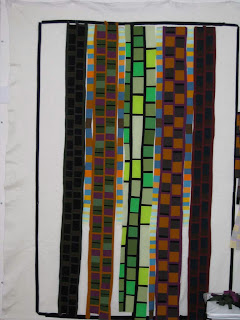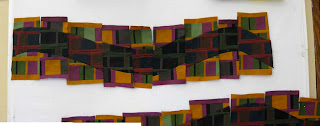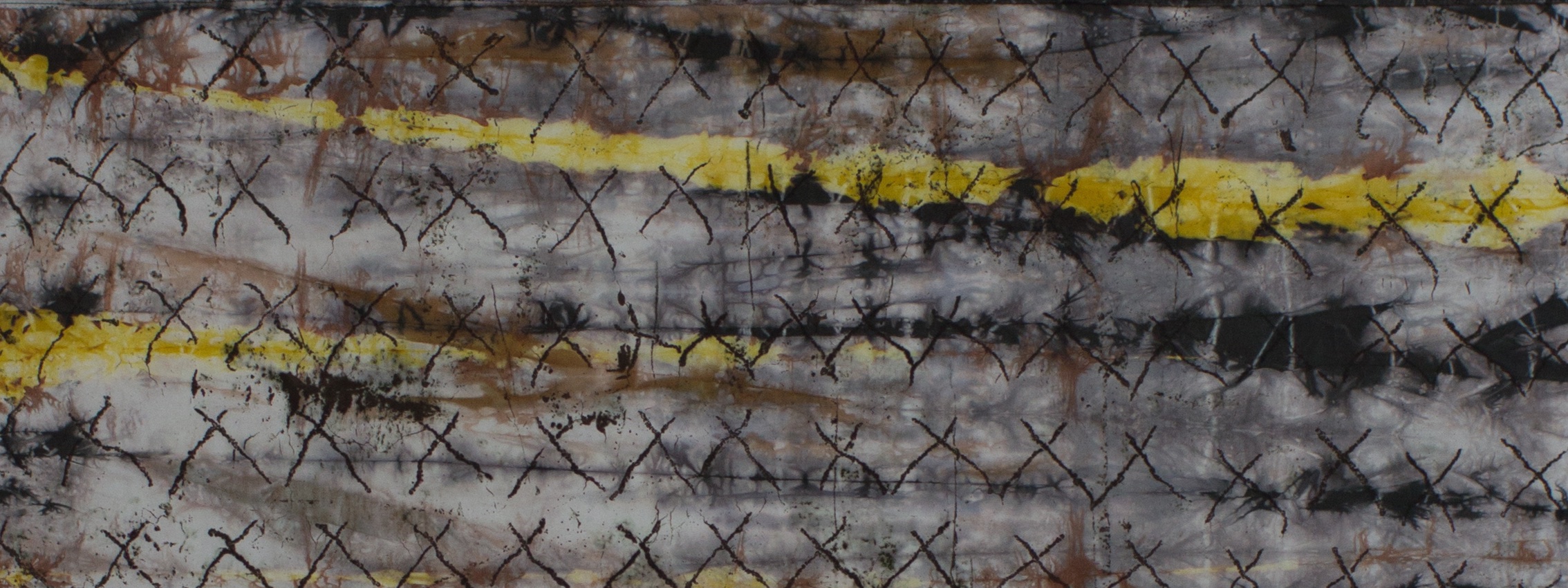
Thoughts & news
Adventures in itajime shibori
Adventures in what?
From the same folks that gave the world sushi and origami comes the equally OCD collection of dye patterning techniques collectively known as shibori (she-BOO-ree). All of these methods involve creating a physical resist between cloth and a dye bath by folding, clamping, wrapping, stitching, and binding. I've been using arashi (ah-RAH-she)--pole wrapping--for several years and getting some satisfying results.
An example of the type of patterning produced by arashi shibori
I've also been experimenting with itajime (it-ah-JEE-may), another form of shibori that involves clamping folded cloth between wood or plexiglass forms to create a resist. With all of these techniques you get out what you put in. In the case of itajime, carefully folding and pressing the fabric is a time-consuming process, but ultimately produces better (or at least or regular geometric) results than loosely folded fabric.
Itajime scarves drying on the line
And, for your further entertainment, here's a video that compresses the somewhat fussy process of folding and pressing a 2 yard piece of cloth into a small triangular stack. In this video and the image above I'm working with cotton lawn.
Tuesday morning clothesline
I was in the studio at 6 AM this morning (before work) washing out the dye from Sunday and Monday. Last night, all of Sunday's wax and print work got a nice over-dye. I left 12 yards of cloth drying on the line today while I'm at work so they'll be ready for me when I get home. Tonight I get to press out all of the wax (ironing between mountains of newspaper) and launder out the residue. This is about my least favorite task, but it's the only way forward it I want to apply more color. It's that Karate Kid thing--wax on; wax off.
The clothesline as I left for work.
Let the season of making begin
I'm busy in the studio all year, but over the past 5 years or so I've fallen into an annual pattern of activity. January through April is usually a time for research and developing new ideas--and the time for a much needed winter vacation. May is usually the time that I'll fit in a workshop if I can. June through September I'm often working on art with an eye toward summer and fall exhibition deadlines. But, it's in October through December that the activity level really ratchets up. I sell wearable art (mostly scarves) online all year long, but I also do one 2-day craft show at the beginning of December. Producing enough work for 2 days of selling and working a full time job takes months of part-time effort.
And as I write this, I've got several yards of printed fabric downstairs in the studio batching--oh, yeah, and dye-stained hands. I absolutely love this frenzy of dyeing, printing, and sewing, but I'll be exhausted by Christmas. That's just the way it is.
Here are some photos of just some of the weekend's activities. Many thanks to Dan, my in-house photographer.
Adding soy wax resist to silk crepe de chine using an Indonesian tjap. The wax will block whatever color I add next.
Inking a large sheet of plexiglass with thickened dye for monotype printing.
Creating pattern on the monotype plate.
Printing the waxed cloth on inked plate.
Pulling the print.
The next steps will be letting the dye cure then putting the whole thing in an immersion dye bath. After that I'm not sure--probably removing the wax followed by...whatever it needs.
Lessons from my 365: Not every design is a winner
Well, doesn't this seem like a good place to start as I consider what lessons I might learn or re-learn from my recently completed "365 Patterns" project? Just because I put pen to paper, brush to canvas, or press the shutter release button on a camera doesn't mean the result is going to be a great work. Consider the following two images. I probably spent about the same amount of time on each, but the one on the left clearly has color issues and just isn't anything too special. The on the right is better: more depth, better positive/negative space relationships, and just generally more engaging.
So, what's to be learned from this confession? I think it's these thoughts:
- Do prepare to work by taking a few minutes to clear your mind and settle your body. This is my single biggest challenge.
- Do practice, and in doing so, sometimes work rapidly.
- Do balance rapid work with slower and more contemplative work.
- Don't become overly invested in the result before the process has even begun. "I will now create a successful work of art?" is a burdensome point of beginning at best, and more often than not the first step on the road to disaster.
- Don't loose sight of the fact that at some point there's greater value in working--regardless of the outcome--than in merely contemplating the work. Spend time with your thoughts, then get out of your head and do something.
- Do value the learning that comes from making mistakes and doing work that turns out to be less than expected.
Untitled work in progress

Saving the hopeless quilt: Part 4
As I began to assemble it I realized that the little piece of the curved middle strip that was extending below the rest of the design was something to which I'd become attached. From the purely practical perspective of construction, this was not the best time to come to this realization because it meant even more seam ripping than I was already doing, not to mention scavenging through the scrap pile in search of bits of fabric that I was out of.

Saving the hopeless quilt: Part 3
Saving the hopeless quilt: Part 2
Picking up where I left off with the last post...
Saving the hopeless quilt: Part 1
Back in October I returned from two weeks of workshops in a sort of mixed up mood. One week produced some good samples and good ideas, the majority of which I've yet to explore. The other week produced bits and scraps of a failed design that quite frankly were just a nagging reminder of something that didn't quite turn out as expected. They can't all be home runs, right? Sometimes teacher, student, and the planets just don't align the right way at the right time. Learn what you can, remember the love, try to forget the angst, and move on.
